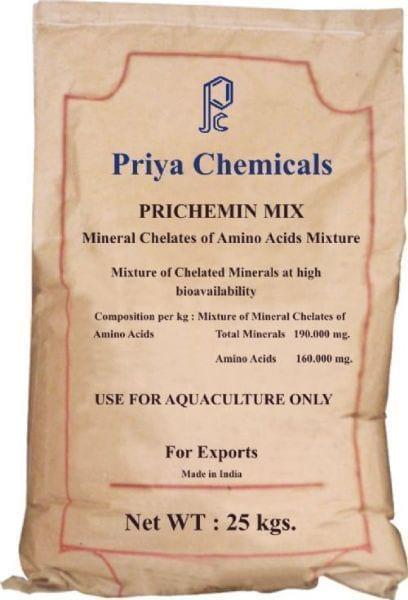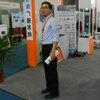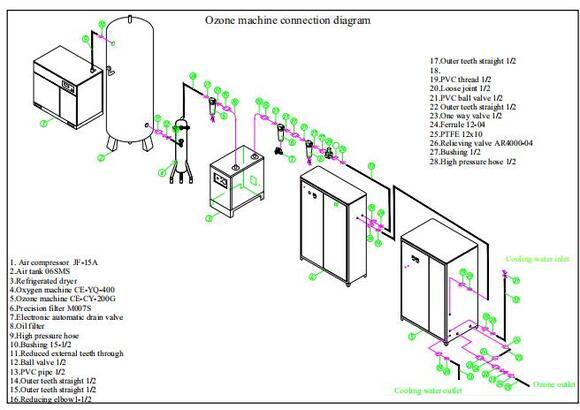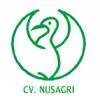Explore all the information on
Aquaculture management
Welcome to the page about Aquaculture management of Engormix; a source of knowledge on Aquaculture management.
1 how to figure out how much ozone for your aquaculture water? 2 how to control the CO3? Speaking of ozone disinfection, few people knows what the CO3 is, Why? ...
Comments : 0
Recommendations: 0
Integrated Farming System (IFS) is an interdependent, interrelated often interlocking production systems based on few crops, animals and related subsidiary enterprises in such a way that maximize the utilization of nutrients of each system and minimize the negative effect of these enterprises on environment. Under Indian conditions where large population of farmers comes under small and marginal farmers, it becomes very necessary to find out the farming techniques which are best...
Comments : 6
Recommendations: 4


PRICHEMIN MIX
Priya's PRICHEMIN MIX is a mineral supplement for aquaculture. It consists of a mix of mineral chelats from aminoacids
Suggested link
is it ok to transfer the healthy shrimp to the recently harvested white feces syndrome affected pond which was heavily chlorinated? ...
Comments : 0
Recommendations: 0
Olivier Decamp (INVE Aquaculture) gave a presentation about the industry challenges and the contribution of probiotics in the increased production of shrimp, during the CIAC Trade-show....
Comments : 4
Recommendations: 3


PRICHEMIN MIX
Priya's PRICHEMIN MIX is a mineral supplement for aquaculture. It consists of a mix of mineral chelats from aminoacids
Suggested link
INTRODUCTION The increasing global population and the limiting global capture fisheries undeniably increase the demand of aquaculture. On the other hand, those will also bring about limitation to aquaculture expansion in particular of land and water utilization. Therefore, productivity enhancement in term of total production per input used becomes one of the major priority in the development of aquaculture (Avnimelech et al., 2008) . Aquaculture is the culture of...
Comments : 0
Recommendations: 0
Introduction Fish are the most feed converser than all terrestrial animals' species. So, the world population consumes 17% of their food protein from fish. Nowadays, aquaculture production in Egypt reached to 80% of the total local fish production (GAFRD, 2016 and Abdelhamid, 2019b). Milstein and Svirsky (1996) reported that an appropriate-adequate fish density will utilize the available resources efficiently and fish environment relationships and minimize the antagonistic ones....
Comments : 0
Recommendations: 1


PRICHEMIN MIX
Priya's PRICHEMIN MIX is a mineral supplement for aquaculture. It consists of a mix of mineral chelats from aminoacids
Suggested link
Hey all. New here. I'm currently raising some tilapia as part of an aquaponics system, but I'm using seachem prime to get rid of chlorine and chloramines. I hear that seachem prime makes my fish unsuitable for human consumption. My city water has chloramines (and chlorine) in it. What can I do to get rid of the chloramines whilst keeping the water suitable for fish for human consumption? Thanks!...
Comments : 0
Recommendations: 0
What are the primitive measure to be taken to increase the survival rate in shrimp ponds. Last culture survival rate was less than 45%. Please suggest the measure to be taken. Thanks in Advance ...
Comments : 0
Recommendations: 0


PRICHEMIN MIX
Priya's PRICHEMIN MIX is a mineral supplement for aquaculture. It consists of a mix of mineral chelats from aminoacids
Suggested link
In aquaculture, fish, shrimp and crabs are all aerobic organisms, and they are at the top of the aerobic biological chain in the RAS system. When the ecological balance point of the water body is out of balance, the first problem that appears is the bottom aerobic organisms. When the water quality is detected, the imbalance has already begun. When the fish show symptoms, it indicates that the water body has deteriorated to a certain extent. Anaerobes have begun to multiply in large numbers...
Comments : 0
Recommendations: 0
Olivier Decamp (INVE Aquaculture) discussed the issues and challenges in this activity, as well as alternatives and solutions....
Comments : 0
Recommendations: 2


PRICHEMIN MIX
Priya's PRICHEMIN MIX is a mineral supplement for aquaculture. It consists of a mix of mineral chelats from aminoacids
Suggested link
Introduction Clarias gariepinus , a major freshwater fish in Nigeria, is of growing economic value in African aquaculture industry [8, 9, 13]. According to Macharia et al. [11], the hatching rates of Clarias gariepinus eggs in many hatcheries in Africa are erratic, ranging from 8.0 to 70%, depending on the degree of sophistication of the management of the hatcheries. Since hatchery production is the...
Comments : 0
Recommendations: 0
Malawi — a Fish Eating Nation Although Malawi is endowed with the ninth largest lake in the world and the third largest and second deepest lake in Africa, overfishing resulted in the collapse of the tilapia fishery around 1990- 1991. Tilapia, known locally as chambo, is the country’s favorite fish and now costs from US$ 4.00-8.00/kg (R55-110/ kg) for whole or live fish. This is a result of market scarcity which is unfortunate considering the massive demand for...
Comments : 11
Recommendations: 1


PRICHEMIN MIX
Priya's PRICHEMIN MIX is a mineral supplement for aquaculture. It consists of a mix of mineral chelats from aminoacids
Suggested link
How to treat after sludge removal from vannamei culture pond? ...
Comments : 0
Recommendations: 0
1. How to lower the water hardness in shrimp ponds? Is there any solution to reduce the hardness while pumping the water to shrimp ponds? 2. Will the Survival drop in early stages of shrimp is due to hardness of water? Please clarify. ...
Comments : 0
Recommendations: 0


PRICHEMIN MIX
Priya's PRICHEMIN MIX is a mineral supplement for aquaculture. It consists of a mix of mineral chelats from aminoacids
Suggested link
There is a need to increase biosecurity measures in the shrimp aquaculture industry as part of the 'new normal'. It is not a secret that the shrimp industry in many countries has suffered considerable economic losses due to a number of different shrimp diseases including the acute hepatopancreatic necrosis disease (AHPND). According to OIE, AHPND has been officially reported in China (2010), Vietnam (2010), Malaysia (2011), Thailand (2012), Mexico (2013) and the...
Comments : 7
Recommendations: 4
Matt Smith (Ohio State University) explained how to enhance aquatic farming, during 2019 NIAA Annual Conference: Animal Agriculture - Innovation, Technology and Consumer Engagement in Des Moines, Iowa, USA....
Comments : 1
Recommendations: 1


PRICHEMIN MIX
Priya's PRICHEMIN MIX is a mineral supplement for aquaculture. It consists of a mix of mineral chelats from aminoacids
Suggested link
Commercial breeding of fish as a source of protein generates a significant amount of business around the globe. As many species are highly sensitive to fluctuations in water temperature, pH, and levels of oxygen and nitrogen, the chemical and biological environment of aquaculture systems must be closely monitored and maintained (Mumpton, 1985). The natural absorption and adsorption capabilities of zeolite make it the perfect candidate to promote the ongoing health and sustainability of...
Comments : 0
Recommendations: 0
1. Introduction Aquaculture contributes about 74% of the total fish production in Egypt [1]. Egypt is an arid country that has a negative water balance. Its annual water supply from the Nile, rainfall along the Mediterranean coast and deep groundwater amount to approximately 57.7 billion cubic meters (BCM). But each year, the farms, industries, and people use around 72.4 BCM [2]. The reuse of drainage water is one of the main reasons why Egyptians can use a larger amount of...
Comments : 0
Recommendations: 0


PRICHEMIN MIX
Priya's PRICHEMIN MIX is a mineral supplement for aquaculture. It consists of a mix of mineral chelats from aminoacids
Suggested link
Nowadays, UV disinfection systems are employed to disinfect water, the reactions are instantaneous, taking only a few seconds to occur, with no by-product or side effect. UV systems are trusted in a wide range of industries including drinking water disinfection, wastewater treatment, aquaculture farming or other applications. Such systems are able to disinfect more than 100,000 m³/h of water in aquaculture systems, continuously. ...
Comments : 0
Recommendations: 0
1. Introduction Aquaculture production has grown enormously in recent years and among that Penaeid shrimps are one of the most important cultured species worldwide especially in Asia due to their high economic value and export .A new shrimp species Litopenaeus vannamei species introduced and culture practice has been carried out in many coastal states of India last few years. Presently it is dominated 90 % of ...
Comments : 5
Recommendations: 3















